Increasing the visibility of a website is possible by opening a blog
Increasing the visibility of a website? Thanks to the blog that turns out to be an important tool for companies, this is possible.
The blog is a tool that allows you to do Inbound Marketing, that is, to be found when people need you and your company.
It is possible to set the blog as the basis of your company, or create a blog section within the institutional website.
This decision to be taken, taking into consideration that:
- the blog is a dynamic tool
- the company website is static.
An online presence therefore focused on the blog requires constant updating, if instead you bind the blog in a section of the website you have more margins of freedom, but not too many!
Main goals of a blog are:
- increase the visibility of a website
- get to important rankings in search engines.
Therefore, if you create a blog where you regularly write articles and information that are useful and interesting for your target audience, this not only helps SEO positioning, but also increases the possibility that someone will find your content in the search results and, in turn, your company.
Providing ideas, advice or sharing articles within your blog will strengthen your bond with your audience and make you more trustworthy in their eyes and they will end up trusting your brand.
Increasing the visibility of a website?
The fundamental rule is to create quality and targeted content for your target audience. You must therefore define who your blog is for!
Depending on your target audience, the content that will be written will have to be targeted to the characteristics, tastes and interests of this.
The blog is therefore a means of communication in which to insert articles, photos, videos, and all the contents that you think are interesting for your audience!
Increasing the visibility of a website: the role of the Responsive blog
A blog able to achieve a good positioning in the SERP is the one that best suits the different screens of the mobile devices used by users (responsive that is able to adapt to different displays).
If your blog or website does not guarantee fast, pleasant and above all clear navigation on mobile, it will hardly conquer the first page of the search engine.
The contents must be short, impactful and at the same time simple, therefore suitable for an audience that reads from mobile and is in a hurry.
Increasing the visibility of a website: the role of the images in a blog
The images used in blog articles can make a difference in terms of search engine rankings.
Image optimization for Google is a must-have best practice and can help convert visitors into actual customers.
The images must be:
- really useful for users (enhance, persuade and make the blog message convincing)
- integrated on pages with coherent texts, to their meaning (using a photo of a web agency in an article that talks about a mechanical workshop is certainly not useful)
- loaded ensuring a good compromise between weight and quality of the photo (excessive dimensions could slow down the loading of the page and sink the UX).
Images are indexed in the same way as textual content.
The SEO tags related to the images to be optimized to obtain greater visibility of a website are:
- Filename: should identify a particular topic. The ideal length can be between 4 and 6 words.
- Description: it is content that highlights the context of the image. You can use it to provide more detailed information about the page it belongs to.
- Title: it can be irrelevant in terms of SEO, but useful on the UX side as it shows, to those who hover over the image with the mouse, additional information on the content of the image itself. It therefore allows you to quickly get an idea of what the page is about.
- Tag Alt: it provides information to the reader on what the image represents and comes to the aid of visually impaired users. Alt text is very important in terms of usability and should explain in a simple and intuitive way why it is important for a hypothetical visitor. It can be between 70 and 100 characters long.
Meta description in each blog post
The meta description summarizes the content of the article, highlighting the subject matter.
In the meta description you must enter the keyword / phrase chosen for the content of the article.
A correct and content-appropriate keyword phrase will increase the chances of the article content being liked by Google and rewarded in SERPs.
Strategic is to focus on long-tailed keywords / phrases to answer specific questions posed by users.
The more complete the content (SEO title, meta description and key phrase) the more chances of winning a high position in the search results will increase.
READ MORE
-
 How important is the speed of a website?- 08/09/19
How important is the speed of a website?- 08/09/19 -
 Content creation? How to be first on Google with SEO- 08/09/19
Content creation? How to be first on Google with SEO- 08/09/19 -
 How to write content for the website- 04/11/19
How to write content for the website- 04/11/19 -
 Website optimized for mobile, it is the solution that will help increase sales- 04/11/19
Website optimized for mobile, it is the solution that will help increase sales- 04/11/19 -
 Why is it useful to have a mobile app?- 04/11/19
Why is it useful to have a mobile app?- 04/11/19 -
 The content must be optimized for mobile. Let’s find out how!- 04/11/19
The content must be optimized for mobile. Let’s find out how!- 04/11/19 -
 Do you want to know what the ideal structure of a website is?- 04/11/19
Do you want to know what the ideal structure of a website is?- 04/11/19 -
 How to create a content editorial plan for the website- 04/11/19
How to create a content editorial plan for the website- 04/11/19 -
 Sponsoring the mobile app and make it more visible! How to do?- 04/11/19
Sponsoring the mobile app and make it more visible! How to do?- 04/11/19 -
 How to write content for website promotion on Google Ads- 04/11/19
How to write content for website promotion on Google Ads- 04/11/19 -
 Why is content on a website so important?- 26/11/19
Why is content on a website so important?- 26/11/19 -
 How to improve website performance- 28/11/19
How to improve website performance- 28/11/19 -
 Improve the indexing of the website with the blog- 03/12/19
Improve the indexing of the website with the blog- 03/12/19 -
 Structure and form: optimization of the mobile website- 10/12/19
Structure and form: optimization of the mobile website- 10/12/19 -
 How important can an optimized mobile app be for your company?- 17/12/19
How important can an optimized mobile app be for your company?- 17/12/19 -
 Not just a website: the mobile app can be one of the tools to increase the visibility of your company- 24/12/19
Not just a website: the mobile app can be one of the tools to increase the visibility of your company- 24/12/19 -
 Explain complex products- 18/04/22
Explain complex products- 18/04/22 -
 Inbound Marketing- 22/04/22
Inbound Marketing- 22/04/22 -
 Inbound Marketing Companies- 27/05/22
Inbound Marketing Companies- 27/05/22 -
 What is the effective structure of a mobile app- 12/09/22
What is the effective structure of a mobile app- 12/09/22 -
 How to get the user’s attention through content- 26/04/22
How to get the user’s attention through content- 26/04/22 -
 The basic rules for writing content- 26/04/22
The basic rules for writing content- 26/04/22 -
 Sponsor your site: how the content posted can help you- 26/04/22
Sponsor your site: how the content posted can help you- 26/04/22 -
 How to create an effective editorial plan to increase visits- 26/04/22
How to create an effective editorial plan to increase visits- 26/04/22 -
 Mobile vs Desktop how content changes- 25/04/22
Mobile vs Desktop how content changes- 25/04/22 -
 How does site speed affect indexing?- 25/04/22
How does site speed affect indexing?- 25/04/22 -
 Leads and Google Ads: how to increase website traffic- 25/04/22
Leads and Google Ads: how to increase website traffic- 25/04/22 -
 6 fundamental things that make it easier for users to make purchases from mobile- 24/04/22
6 fundamental things that make it easier for users to make purchases from mobile- 24/04/22 -
 iOS and Android how to create an app- 18/04/22
iOS and Android how to create an app- 18/04/22 -
 Telemaco case history mobile app- 15/04/22
Telemaco case history mobile app- 15/04/22 -
 Pros and cons of having a site optimized for every screen- 14/04/22
Pros and cons of having a site optimized for every screen- 14/04/22 -
 Content and SEO to be successful with your website- 14/04/22
Content and SEO to be successful with your website- 14/04/22 -
 How content marketing for service companies can be helpful- 14/04/22
How content marketing for service companies can be helpful- 14/04/22 -
 3 Elements to Keep in Mind When Creating Content for the Website of your client- 12/04/22
3 Elements to Keep in Mind When Creating Content for the Website of your client- 12/04/22 -
 Content creation for mobile! The rules to follow.- 08/04/22
Content creation for mobile! The rules to follow.- 08/04/22
Latest contributions
Services
-
 Mobile ApplicationsDeveloping quality mobile applications isn't easy at all. Find out how to take this opportunity.
Mobile ApplicationsDeveloping quality mobile applications isn't easy at all. Find out how to take this opportunity. -
 Websites developmentThe websites development service allows you to get the development of high quality websites and cloud applications. Find out more...
Websites developmentThe websites development service allows you to get the development of high quality websites and cloud applications. Find out more... -
 Marketing and CommunicationDiscover the professional Marketing and Communication services: Social Media Marketing, Google Ads and Search Engine Optimization (SEO).
Marketing and CommunicationDiscover the professional Marketing and Communication services: Social Media Marketing, Google Ads and Search Engine Optimization (SEO). -
 Content Marketing & Content CreationContent Marketing, with the creation of specific content, is fundamental in maximizing the quality of the User Experience and SEO.
Content Marketing & Content CreationContent Marketing, with the creation of specific content, is fundamental in maximizing the quality of the User Experience and SEO. -
 Technological PlatformsTechnological Platforms for Domain Management, DNS, Email, Hosting and Database Management
Technological PlatformsTechnological Platforms for Domain Management, DNS, Email, Hosting and Database Management -
 European Calls for Digital TransformationThe European calls for digital transformation represent important opportunities for companies in the digital sector.
European Calls for Digital TransformationThe European calls for digital transformation represent important opportunities for companies in the digital sector.









